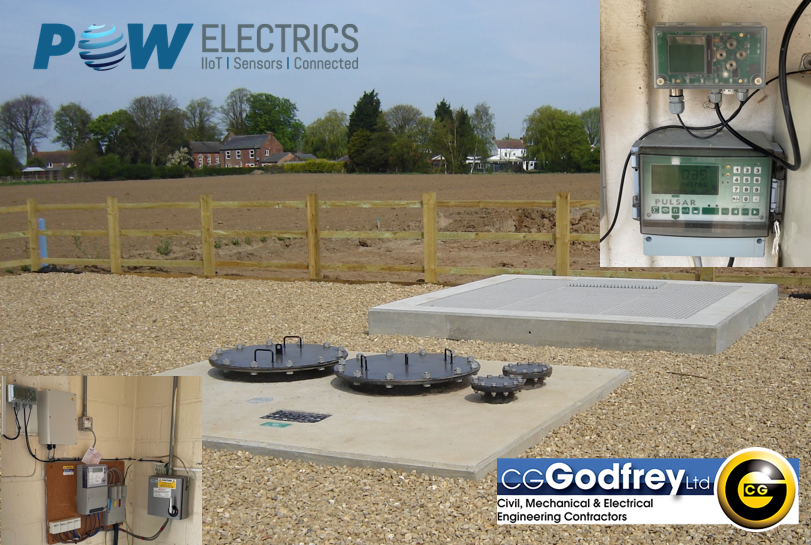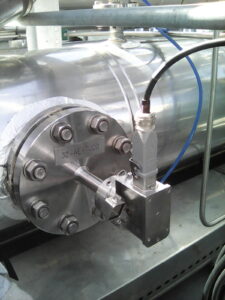According to the United Nations, we can expect 68 per cent of the global population to live in urban areas by 2050. To cope with this increase, cities are focusing on the use of technology to improve equity for residents, facilitate more sustainable living and encourage better use of resources. Here Richard Mount, Director of Sales at ASIC design and supply company Swindon Silicon Systems, explores the sensor-driven technologies that enable smart cities, and the Application Specific Integrated Circuits (ASICs) that support them.
Istanbul, Turkey ranked as the number one congested city in the world in 2021, as reported by the TomTom Traffic Index, with drivers in the city losing an average of 142 hours per year to traffic jams. With increasing populations and a limited amount of space, modern cities like Istanbul need to rethink how they plan and manage several aspects of city life if they’re to create more streamlined, enjoyable environments for their citizens.
To combat urban inefficiencies, many countries are making their cities ‘smarter’ by harnessing data to manage assets, resources and services — ultimately aiming to improve operations across the city. Above all, a smart city must be informed by those who commute, work, live and socialise there. Collecting data is vital in understanding how a city can best serve the needs of its citizens.
The world is turning to Internet of Things (IoT) technology to achieve these smart cities. Data collected by sensor-rich IoT devices is analysed by cities in real-time and used to improve many aspects of critical infrastructure. Intelligence provided by smart city technology enables enhanced services capable of anticipating user’s needs, reducing public spending and increasing sustainability.
Smart sensors
Generally, smart city technology architecture can be divided into four layers. First is the sensing layer, which uses sensors to generate data. Then there is the network layer, which consists of the hardware and software resources that enable network connectivity and communication. The data layer receives and stores vast amounts of data and finally the service layer interprets this information in an intelligent and usable way.
Digitalisation and advancements in the IoT are driving large-scale adoption of sensor technologies across cities. It allows cities to collect data from citizens, buildings and assets that can be processed to monitor and manage everything from traffic and transportation systems to crime detection. Technologies such as artificial intelligence and high-speed internet networks are being integrated with sensor networks to enhance data collection further.
Smart utilities
A wide variety of sensors must be employed to collect all the information necessary for a smart city to function effectively. For example, smart meters can be used to improve efficiency and reduce costs among utilities. Meters that measure voltage, amperage and power factor can monitor electricity consumption, while positive displacement-type sensors detect water usage.
Smart meters enable consumers to monitor their own usage and make individual-level changes to prevent waste and cut costs. Utility companies can also see consumption patterns and implement plans to improve efficiency. For example, electricity companies often offer incentives to shift demand to match peaks in power generation. A network of smart water meters in a piping system can be used to obtain an accurate water balance, helping to find leaks and manage resources where demand exceeds supply.
Reducing congestion
Looking to the future, we can expect smart cities to adopt even more sensor-driven technology. When driving, humans tend to speed up to meet the car in front of them, resulting in phantom traffic jams. By maintaining a consistent speed and distance from other cars, automated vehicles may provide an opportunity to reduce congestion in smart cities.
Autonomous vehicles would be impossible without sensors — radar sensors send out radio waves that detect objects and gauge their proximity to neighbouring vehicles in real time, while Light Detection and Ranging (Lidar) sensors use lasers to create 3D images of the detected objects and map the surroundings.
Custom ICs
The signals generated by smart sensors can be digital but are more commonly analogue values, such as voltage or current. To interface with the network layer and facilitate data analytics, these analogue values must be conditioned and digitised. This can be achieved using numerous off-the-shelf integrated circuits (ICs). However, where original equipment manufacturers (OEMs) want to differentiate themselves, both technically and commercially, from their competition, ASICs are often a better route to take.
An ASIC is a custom device designed specifically for the customer’s application, resulting in a chip designed to deliver an optimised performance exactly to their specific requirements. Smart cities employ sensors in a wide variety of applications and mixed signal ASIC design allows for investment in performance where it matters for each particular use. Swindon will be able to optimise the entire signal path down to the finest detail, while removing unnecessary features to reduce cost.
Smart sensors must be compact, use as little power as possible and remain reliable at all times. When designing an ASIC, the developers integrate as much of the circuitry as possible into a single package. This reduces component count, resulting in higher reliability, a reduction in PCB space and reduced power consumption. Assembly becomes simpler, and the electronics are afforded greater protection from environmental factors such as vibration — essential if the smart sensors are going to be deployed around a bustling city.
In a smart city, smart sensors must remain in operation for many years. They are likely part of a ten year plus investment cycle, so manufacturers want to avoid having to constantly update and change the electronics. With standard IC components, obsolescence will inevitably become a problem. Manufacturers of standard IC devices tend to upgrade the product throughout its lifetime, which can cause system performance issues if the new part is not compatible with the existing performance requirements.
A custom silicon solution ensures ASIC supply for the lifetime of the sensor. ASICs are designed with non-obsolescence in mind, and the ASIC supplier will work closely with those manufacturing smart city technology to produce a non-obsolescence plan. Using techniques such as storing wafers in dry nitrogen for up to 30 years, the need for costly system redesign and requalification can be eradicated.
Many cities around the world have already begun their journey to becoming smart cites. As the urban population grows, we can expect to see increasing adoption of IoT technologies to improve quality of life for citizens. Smart cities would not be possible without smart sensor technology. OEMs who choose the ASIC design route can expect improvements in performance and reliability and well as reductions in size and power consumption, helping smart cities to function as efficiently as possible.
If you’re interested in a custom design ASIC for your project, talk to a member of the Swindon team at www.swindonsilicon.com/contact-us or call +44 (0) 1793 649400.

 Instrumentation Monthly Test | Measurement | Control
Instrumentation Monthly Test | Measurement | Control






 “We have used Powelectrics
“We have used Powelectrics 


